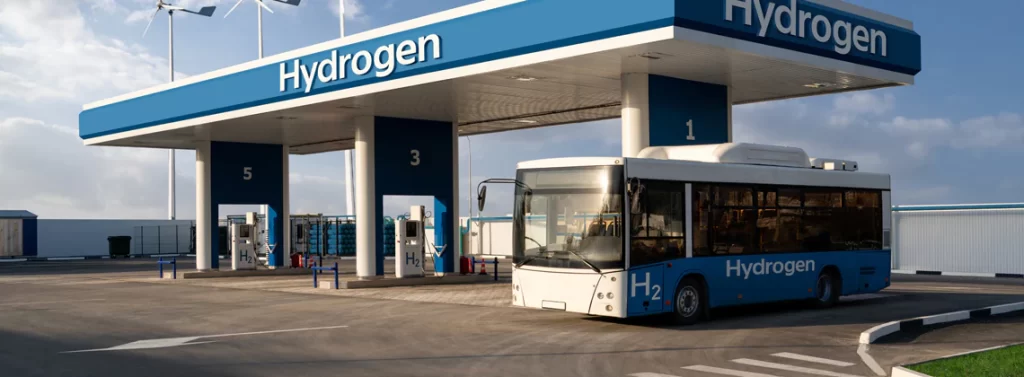
The clean hydrogen energy market is growing amazingly fast, far faster than wind or solar ever did in the early years. It is a unique sector enjoying unprecedented political and business momentum. In just the past five years, more than 30 countries have developed national hydrogen strategies (IEA 2022). Almost every week a major new hydrogen project or breakthrough is taking place. The Paris climate goals have been a key driver, but Russia’s war in Ukraine and soaring gas prices have also driven a shift to greener fuels.
According to Facts and Factors, the demand of global green hydrogen was approximately USD 0.8 Billion in 2021 and can reach around USD 10.2 Billion by the end of 2028. This represents a CAGR of 55.2% during the forecast period (2022-2028).
Global Race for Hydrogen Energy
More than 30 major countries have announced their commitment to hydrogen to cut carbon emissions and reach net zero (Hydrogen Europe).
- Australia has pledged $1.4 billion in bid to be hydrogen super-power.
- China has set up more than 100 large scale green hydrogen projects.
- UK has committed up to £4bn in hydrogen technology and production facilities by 2030
- The Canadian government predicts that the clean fuel sector will be worth CAD $50bn and create 350,000 jobs by 2050. In June 2021, it launched a CAD $1.5bn Clean Fuels Fund to produce low-carbon fuels including hydrogen.
- President Biden’s infrastructure bill specifies USD $9.5bn for capturing, transporting and storing clean hydrogen (U.S. Department of Energy).
- France and Germany alone have already announced €30 bn in subsidiaries for hydrogen technology and infrastructure development.
- India has made a bet of over $2 billion on green hydrogen for developing green energy
- Namibia has signed a US$10 billion green hydrogen deal
- Japan to spend $1.6 billion to extract clean hydrogen from coal in Australia
- Germany announces €1 billion funding for energy transition projects in India
Hydrogen is the most efficient and cleanest source of energy
Hydrogen is the most abundant resource on the planet. It is a rich source of energy and significantly more efficient than other fuels, and has numerous industrial applications ranging from refinement to petrochemical products to steel manufacturing. Electrolyzing water creates green hydrogen, it may use renewable or fossil fuel as energy sources. Electrolyzer separates water into hydrogen and oxygen using an electric current, and then further separates hydrogen.
Benefits of Hydrogen Energy
Hydrogen is environmentally safe and may be stored & transformed into power or heat as needed. Green hydrogen is one of the most significant circular carbon economy (CCE) ideas because we use renewable energy to produce it. Large scale solar and wind projects are increasingly facing hurdles in their growth, like availability of suitable land, ecological harm, resistance by public …(see previous post Renewable Energy). Hydrogen energy does not face these issues.
Hydrogen can replace fossil fuels without emitting carbon dioxide. It is a zero-carbon energy carrier, just like electricity, but it has an edge when it comes to decarbonizing sectors that are hard to electrify like heavy industry, long-haul transportation, or seasonal storage.
Growth Drivers
Best clean energy source: Most decarbonization scenarios anticipate a key role for hydrogen in achieving net-zero emissions by mid-century. The International Energy Agency (IEA) and the International Renewable Energy Agency (IRENA), for example, expect hydrogen to meet 12–13 percent of final energy demand by 2050, up from virtually zero today.
Energy security: Rising energy prices and the political value of being less reliant of fossil fuel-rich countries is driving investment. Hydrogen could be a geopolitical game changer for countries that currently depend on fossil fuel imports but have ample renewables potential.
It can be stored: It is a valuable route for converting renewable energy into a fuel that can be stored and used, with promise in the transport sector and electricity production. Green hydrogen production can use excess electricity generated by solar and wind power, making it a complementary technology for these renewable sources. This enables the proportion of installed renewable energy to be dramatically increased. As a result, the adoption of hydrogen as a mainstream power source will be much quicker than anticipated.
An example of a mega Green Hydrogen project in Australia:
A simply fantastic article by NYTimes that clearly brings out the importance of hydrogen energy.

Hundreds of billions of dollars are being invested in a high-tech gamble to make hydrogen clean, cheap and widely available. In Australia’s Outback, that starts with 10 million new solar panels.
A consortium of energy companies led by BP plans to cover an expanse of land eight times as large as New York City with as many as 1,743 wind turbines, each nearly as tall as the Empire State Building, along with 10 million or so solar panels and more than a thousand miles of access roads to connect them all.
Source – NYTimes.
What are the best investment opportunities?
Some of the world’s most renowned companies that have been working for decades in this exciting field will now reap the rewards for a very very long time! Do not miss these opportunities. Visit Trikaal Research page to explore the best companies – not just in this sector, but in other exciting sectors as well.
Trikaal Macros – Weekly Newsletter
Trikaal Macros is a weekly newsletter on economy and markets, focusing on long-term market drivers and its future outlook. In the short run, a whole lot of factors can drive markets up or down, but in the long run, it is either the government policies, structural factors, or technological innovations, that will drive the economy and markets. Government policies may impact for few years but tech innovations drive markets for decades.
To subscribe to this FREE newsletter – Click here